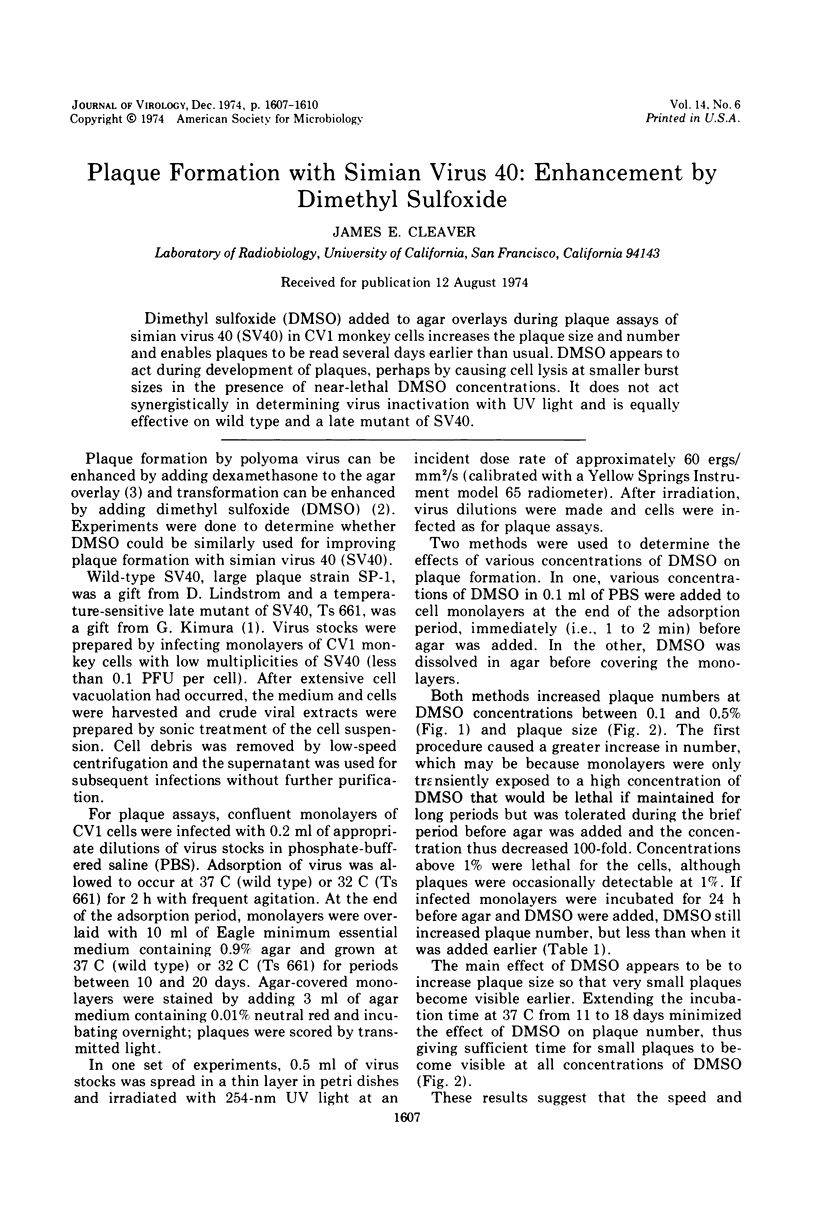Abstract
Dimethyl sulfoxide (DMSO) added to agar overlays during plaque assays of simian virus 40 (SV40) in CV1 monkey cells increases the plaque size and number and enables plaques to be read several days earlier than usual. DMSO appears to act during development of plaques, perhaps by causing cell lysis at smaller burst sizes in the presence of near-lethal DMSO concentrations. It does not act synergistically in determining virus inactivation with UV light and is equally effective on wild type and a late mutant of SV40.
Full text
PDF



Images in this article
Selected References
These references are in PubMed. This may not be the complete list of references from this article.
- Kimura G., Dulbecco R. Isolation and characterization of temperature-sensitive mutants of simian virus 40. Virology. 1972 Aug;49(2):394–403. doi: 10.1016/0042-6822(72)90492-8. [DOI] [PubMed] [Google Scholar]
- Kisch A. L. Dimethyl sulfoxide enhancement of transformation by polyoma virus. Virology. 1969 Jan;37(1):32–41. doi: 10.1016/0042-6822(69)90303-1. [DOI] [PubMed] [Google Scholar]
- Morhenn V., Rabinowitz Z., Tomkins G. M. Effects of adrenal glucocorticoids on polyoma virus replication. Proc Natl Acad Sci U S A. 1973 Apr;70(4):1088–1089. doi: 10.1073/pnas.70.4.1088. [DOI] [PMC free article] [PubMed] [Google Scholar]
- Seemayer N. H., Defendi V. Analysis of minimal functions of simian virus 40. 3. Evidence for "host cell repair" of oncogenicity and infectivity of UV-irradiated simian virus 40. J Virol. 1974 Jan;13(1):36–41. doi: 10.1128/jvi.13.1.36-41.1974. [DOI] [PMC free article] [PubMed] [Google Scholar]



